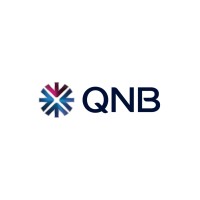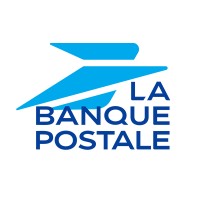Company Cyber Security Posture
NANA
NA Company Details
NA
NA
NA
NA
NA
NA
Scan still pending
NA
NA
Between 200 and 800
This score is AI-generated and less favored by cyber insurers, who prefer the TPRM score.
 NA Global Score
NA Global Score.png)

Company Scoring based on AI Models
| Model Name | Date | Description | Current Score Difference | Score |
|---|---|---|---|---|
| AVERAGE-Industry | 03-12-2025 | This score represents the average cybersecurity rating of companies already scanned within the same industry. It provides a benchmark to compare an individual company's security posture against its industry peers. | N/A | Between 200 and 800 |
Company Cyber Security News & History
| Entity | Type | Severity | Impact | Seen | Url ID | Details | View |
|---|
Company Subsidiaries

NA
Access Data Using Our API

Get company history
.png)
NA Cyber Security News
BPI champions cybersecurity with landmark government training, certification program
Bank of the Philippine Islands (BPI), in collaboration with the Department of Information and Communications Technology (DICT) and USAID's ...
GMA and BPI hold a cybersecurity learning workshop with Sparkle stars
GMA and BPI hold a cybersecurity learning workshop with Sparkle stars · sparkle artists · cybersecurity workshop · gma network · bpi · maging ...
BPI to hold Cybersecurity Conference to ‘Fortify Cyber-Resilience in an AI World’
In response to the escalating threat of cyber fraud and scams in the country, the Bank of the Philippine Islands (BPI) continues to ramp up ...
BPI cybersecurity confab tackles emerging threats in age of AI
The Bank of the Philippine Islands (BPI) spearheaded the Cybersecurity and Consumer Protection Conference last July 31 as part of its effort to ...
Beyond legacies: BPI at 173
MANILA, Philippines — Our fast-paced world is characterized by rapidly changing trends, which presents a unique challenge in building a ...
BPI scores multiple wins at Marketing Excellence Awards for cybersecurity, AI-driven campaigns
Bank of the Philippine Islands has secured five prestigious awards at the Marketing Excellence Awards 2024, recognizing its innovative efforts in cybersecurity, ...
TrustTech Movement of Digital Pilipinas, BPI receives solid support from government
Digital Pilipinas is the largest private-sector led movement for creating an innovation and technology ecosystem in the country that is actively ...
Kyndryl and BPI marks a decade of partnership
Kyndryl and Bank of the Philippine Islands (BPI) commemorate one decade of their technology infrastructure services partnership that made.
Account Error at Big Philippine Bank Causes Social Media Storm
Account Error at Big Philippine Bank Causes Social Media Storm · Balances at some Bank of Philippine Islands accounts affected · BPI President ...

NA Similar Companies

Bank Mellat
Bank Mellat was established on 1979/12/20 by virtue of the resolution dated 1979/9/29 adopted by the General Assembly of Banks and pursuant to the provision of article 17 of the Bill on administering the Banks, with a paid up capital of Rls 33.5 bn as a merger of ten pre-revolution private banks com

QNB Türkiye
Finansbank A.Ş. 26 Ekim 1987 tarihinde iş insanı Hüsnü Özyeğin liderliğinde 100 ortakla Bankalar Kanunu ve Türk Ticaret Kanunu hükümleri uyarınca kuruldu. Sektörde hızlı büyeme ile ilk 5 büyük özel banka arasına giren QNB Finansbank, 2006 yılında Yunanistan'ın en büyük bankası National Bank of Greec

La Banque Postale
La Banque Postale is a ‘bank like no other’ driven by the post office values of local presence and service. As heir to La Poste Financial Services, it is the only bank to have been tasked with a mission to provide access to banking services under the law introduced to modernise the French economy

Bandhan Bank
Started as a universal bank on August 23, 2015, Bandhan Bank is one of India’s fastest-growing private sector banks. Bandhan Bank has always been committed to financial inclusion and aims to serve the underserved. Guided by the principle of ‘Aapka Bhala, Sabki Bhalai,’ the Bank is dedicated not only

UniCredit
UniCredit exists to empower communities to progress. To deliver for all our stakeholders across Europe and unlock the potential within each individual and community we serve. We are a pan-European bank: our 13 banks across the continent work together as one, leveraging the strength of the collectiv

Groupe Crédit Agricole
Crédit Agricole is the French economy’s leading financier and one of the top banking operators in Europe. As a leader in retail banking in Europe, the Group is also the leading European asset manager, the first bank insurer in Europe, and the third largest European operator in project financing. On

Frequently Asked Questions
Explore insights on cybersecurity incidents, risk posture, and Rankiteo's assessments.
NA CyberSecurity History Information
How many cyber incidents has NA faced?
Total Incidents: According to Rankiteo, NA has faced 0 incidents in the past.
What types of cybersecurity incidents have occurred at NA?
Incident Types: The types of cybersecurity incidents that have occurred include .
Additional Questions
What Do We Measure?
















Every week, Rankiteo analyzes billions of signals to give organizations a sharper, faster view of emerging risks. With deeper, more actionable intelligence at their fingertips, security teams can outpace threat actors, respond instantly to Zero-Day attacks, and dramatically shrink their risk exposure window.
These are some of the factors we use to calculate the overall score:
Identify exposed access points, detect misconfigured SSL certificates, and uncover vulnerabilities across the network infrastructure.
Gain visibility into the software components used within an organization to detect vulnerabilities, manage risk, and ensure supply chain security.
Monitor and manage all IT assets and their configurations to ensure accurate, real-time visibility across the company's technology environment.
Leverage real-time insights on active threats, malware campaigns, and emerging vulnerabilities to proactively defend against evolving cyberattacks.




